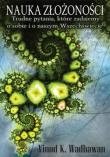
|
« Science The Ice Age Is Coming! Solar Cycles, Not CO2, Determine Climate Get out the fur coats, because global cooling is coming! A world-renowned atmospheric scientist and mountaineer, who has excavated ice out of 17 glaciers on 6 continents in his 50-year career, tells how we know. Since the 1980s, many climatologists have claimed that human activity has caused the near-surface air temperature to rise faster and higher than ever before in history. Industrial carbon dioxide emissions, they say, will soon result in a runaway global warming, with disastrous consequences for the biosphere. By 2100, they claim, the atmospheric carbon dioxide concentration will double, causing the average temperature on Earth to increase by 1.9°C to 5.2°C, and in the polar region by more than 12°C. Just a few years earlier, these very same climatologists had professed that industrial pollution would bring about a new Ice Age. In 1971, the spiritual leader of the global warming prophets, Dr. Stephen H. Schneider from the National Center for Atmospheric Research in Boulder, Colorado, claimed that this pollution would soon reduce the global temperature by 3.5°C.1 His remarks were followed by more official statements from the National Science Board of the U.S. National Science Foundation, ”. . .[T]he the present time of high temperatures should be drawing to an end . . . leading into the next glacial age.” In 1974, the board observed, “During the last 20 to 30 years, world temperature has fallen, irregularly at first but more sharply over the last decade.”2 No matter what happens, catastrophic warming or catastrophic cooling, somehow the blame always falls upon “sinful” human beings and their civilization — which is allegedly hostile and alien to the planet. In 1989, Stephen Schneider advised: “To capture the public imagination . . . we have to . . . make simplified dramatic statements, and little mention of any doubts one might have. . . . Each of us has to decide the right balance between being effective and being honest.”3 This turned out to be an “effective” policy: Since 1997, each of approximately 2,000 American climate scientists (only 60 of them with Ph. D. degrees) received an average of $1 million annually for research;4, 5 on a world scale, the annual budget for climate research runs to $5 billion.6 It is interesting that in the United States, most of this money goes toward discovering the change of global climate and its causes, while Europeans apparently believe that man-made warming is already on, and spend money mostly on studying the effects of warming. Governments of many countries (but not the United States, Australia, or Russia) signed the infamous Kyoto Protocol, which is aimed at the mandatory reduction of oil, coal, and gas combustion. Should this convention be universally implemented, the drop in world temperature would be hardly perceptible, but there would be a drastic and very noticeable regression in the economy. In 2100, under the mandatory emission restrictions of the Kyoto Protocol, the temperature would be diminished by 0.2°C, or, to use the figures of the global warmers, with Kyoto, the temperature increase that we would experience in the year 2094, would be postponed until the year 2100. Thus, the Kyoto Protocol buys the world six years.7 But the losses resulting from the compliance with the Kyoto Protocol would reach $400 billion in the United States alone. The reduction of the world domestic product, when added up across the whole century, would reach $1.8 trillion, while the so-called benefits of the emissions reduction from the Kyoto Protocol are around $0.12 trillion.8 By 2050, in Western Europe and in Japan, the Gross National Product would be reduced by 0.5 percent in comparison with 1994; in Eastern Europe, this reduction would reach 3 percent, and in Russia 3.4 percent.8 Experts working for the Canadian government concluded that the implementation of the Kyoto Protocol would necessitate energy rationing, which would resemble the gasoline rationing during World War II.9 „21st Century Science & Technology", Winter 2003-2004 Read more... (PDF) This article, in a shorter form, appeared in the Polish weekly Polityka on July 12, 2003.
« Science (Published: 03-08-2008 )
page 5991 |
|||||||||||||||||||||||||||||||||||||||||||||||||||||||||||||||||||||
| [ Cooperation ] [ Advertise ] [ Map of the site ] [ F.A.Q. ] [ Store ] [ Sign up ] [ Contact ] The Rationalist © Copyright 2000-2018 (English section of Polish Racjonalista.pl) | ||



 Professor Zbigniew Jaworowski is the chairman of the Scientific Council of the Central Laboratory for Radiological Protection in Warsaw. In the winter of 1957-1958, he measured the concentration of CO2 in the atmospheric air at Spitsbergen. During 1972 to 1991, he investigated the history of the pollution of the global atmosphere, measuring the dust preserved in 17 glaciers—in the Tatra Mountains in Poland, in the Arctic, Antarctic, Alaska, Norway, the Alps, the Himalayas, the Ruwenzori Mountains in Uganda, and the Peruvian Andes. He has published about 20 papers on climate, most of them concerning the CO2 measurements in ice cores.
Professor Zbigniew Jaworowski is the chairman of the Scientific Council of the Central Laboratory for Radiological Protection in Warsaw. In the winter of 1957-1958, he measured the concentration of CO2 in the atmospheric air at Spitsbergen. During 1972 to 1991, he investigated the history of the pollution of the global atmosphere, measuring the dust preserved in 17 glaciers—in the Tatra Mountains in Poland, in the Arctic, Antarctic, Alaska, Norway, the Alps, the Himalayas, the Ruwenzori Mountains in Uganda, and the Peruvian Andes. He has published about 20 papers on climate, most of them concerning the CO2 measurements in ice cores.